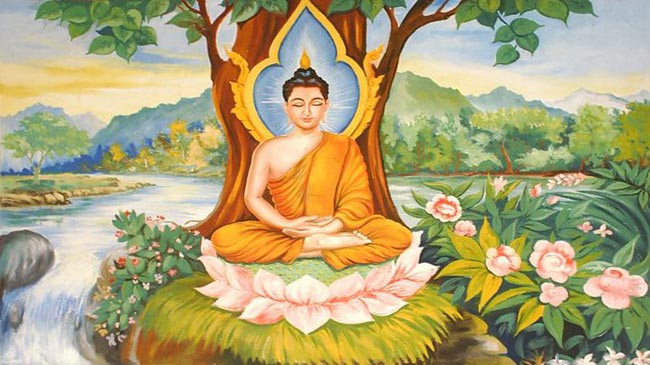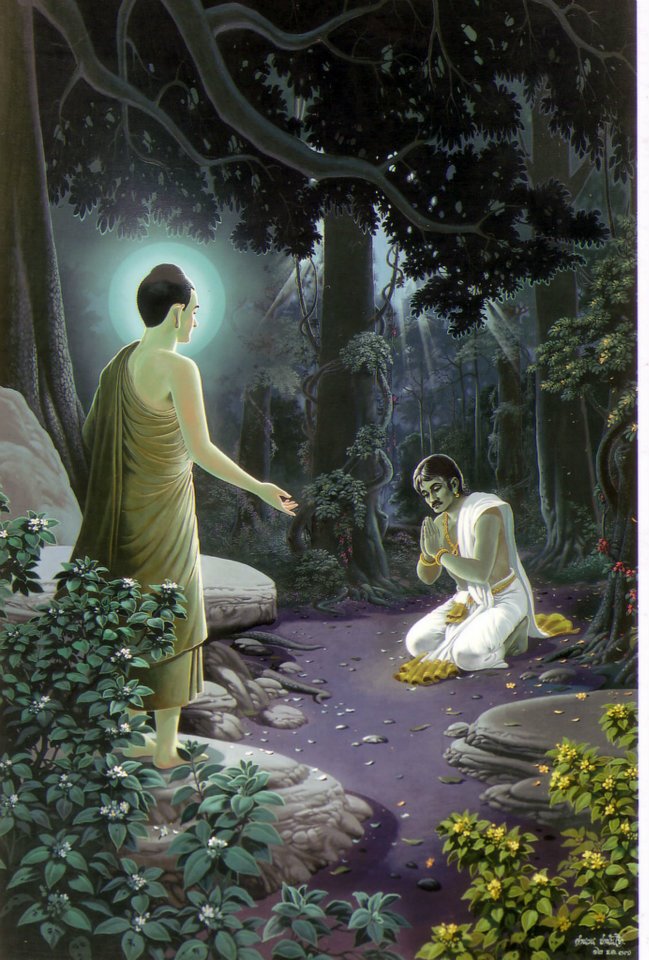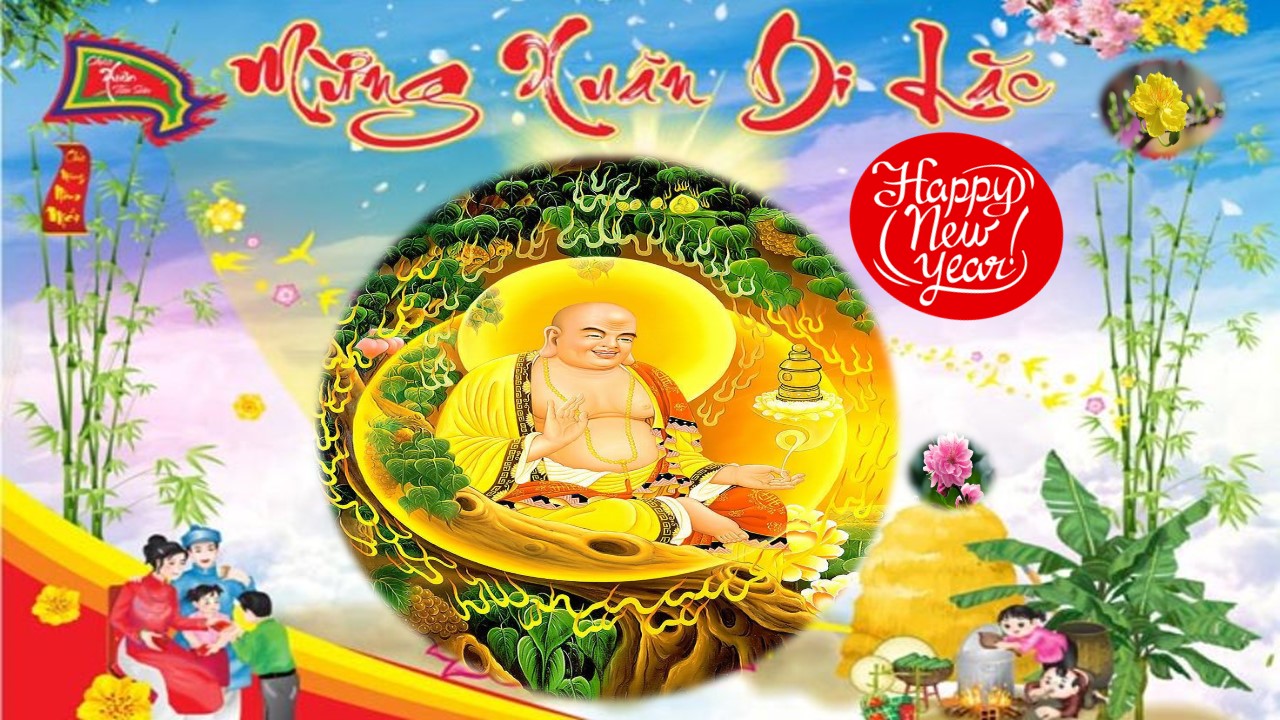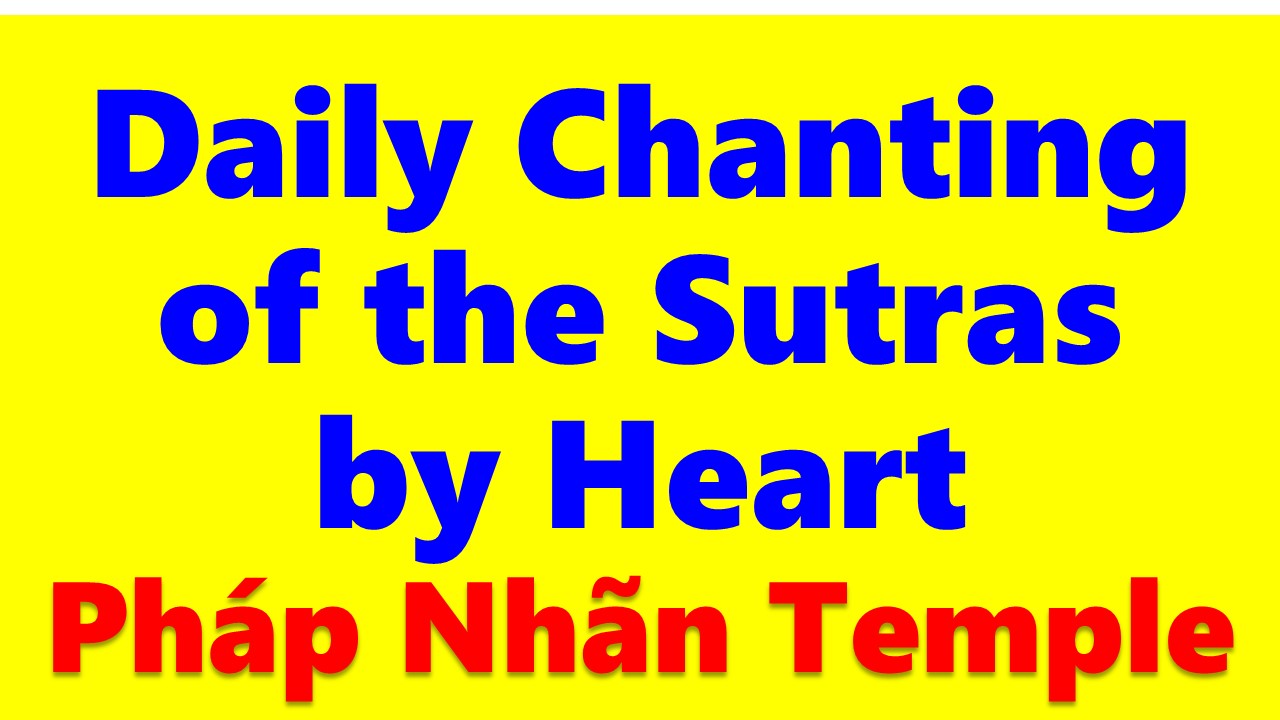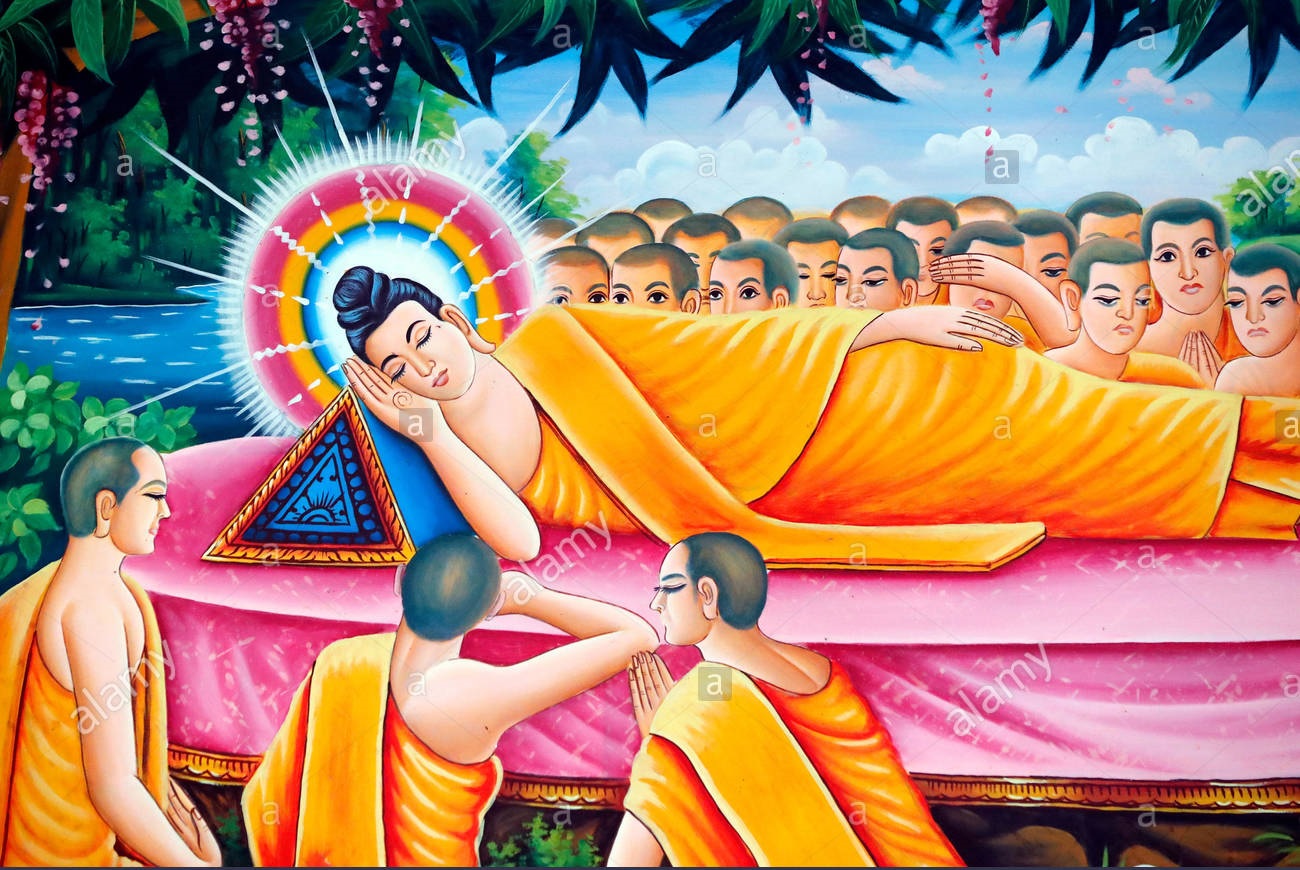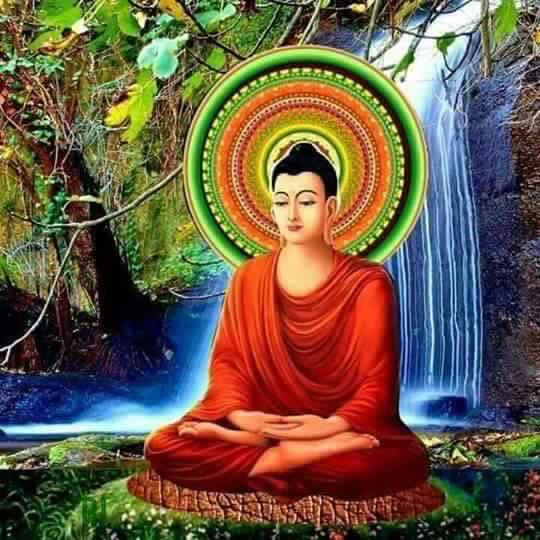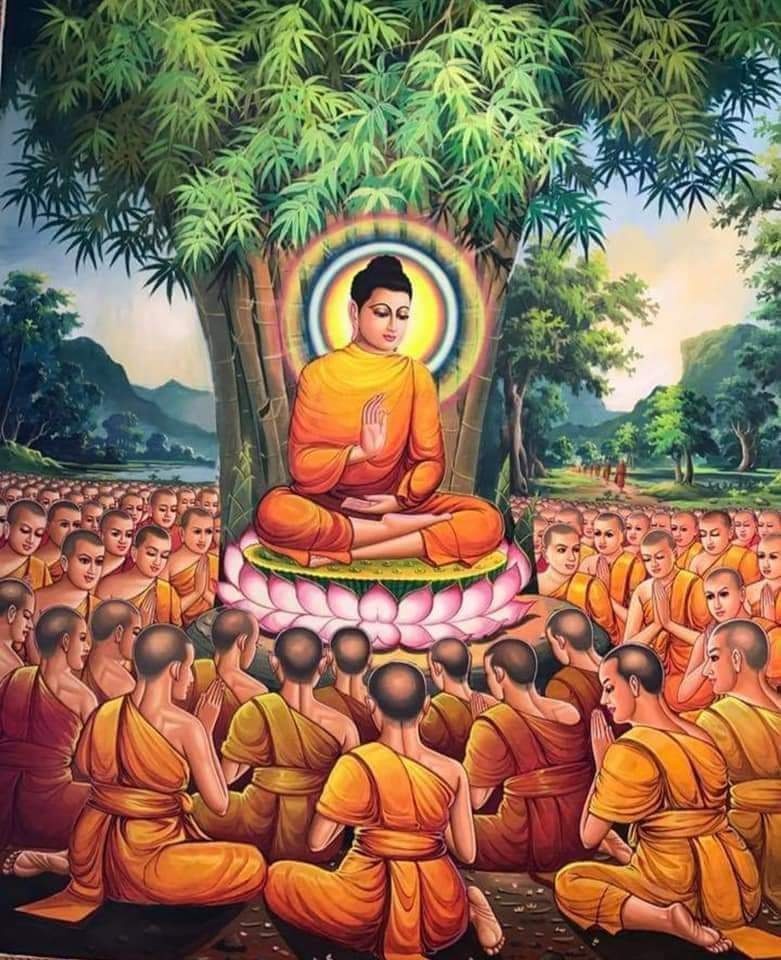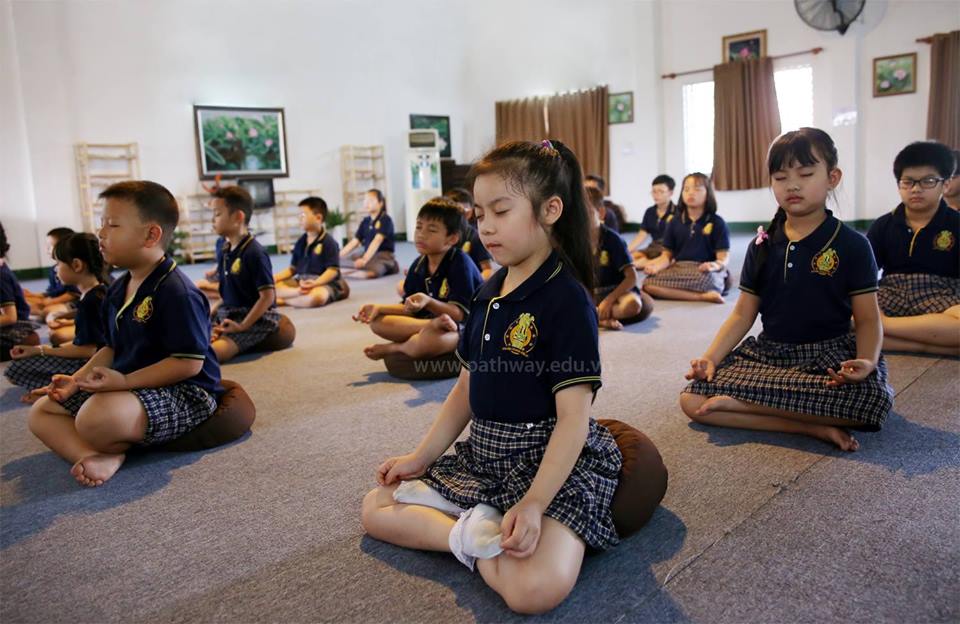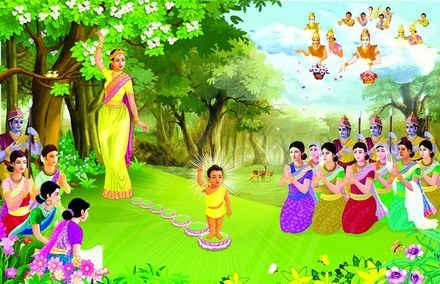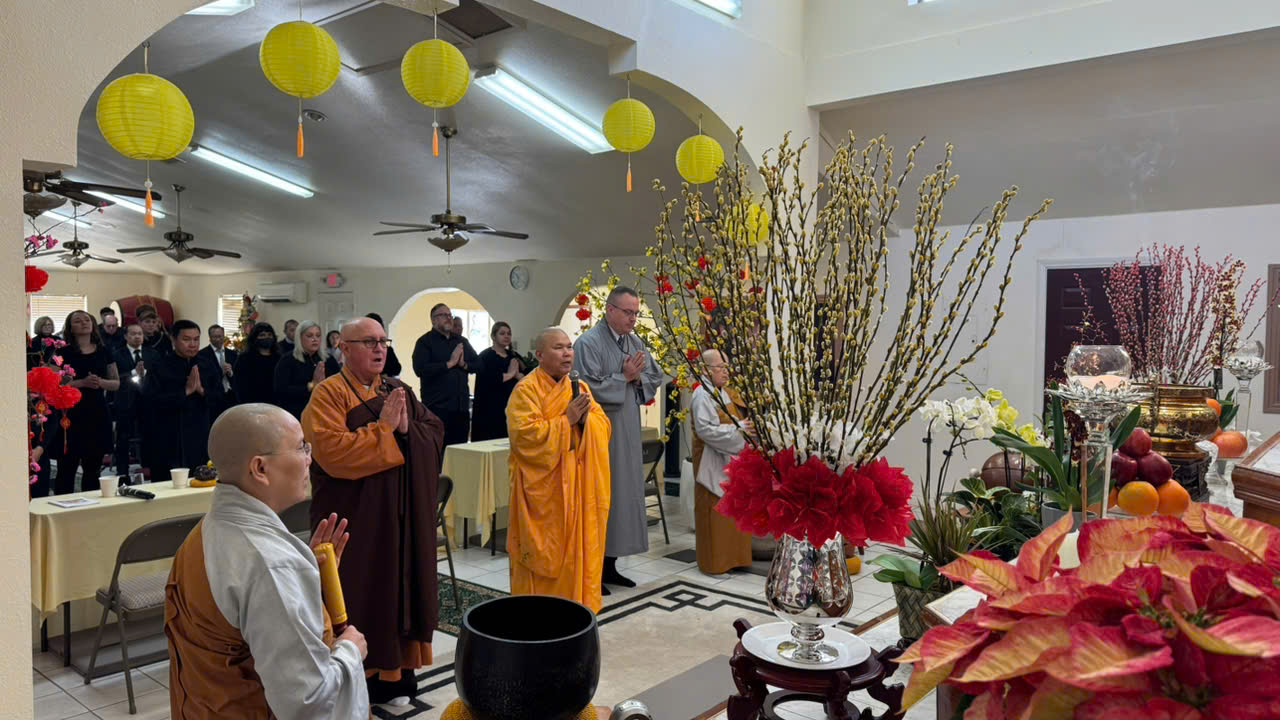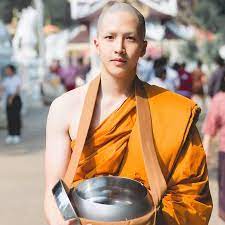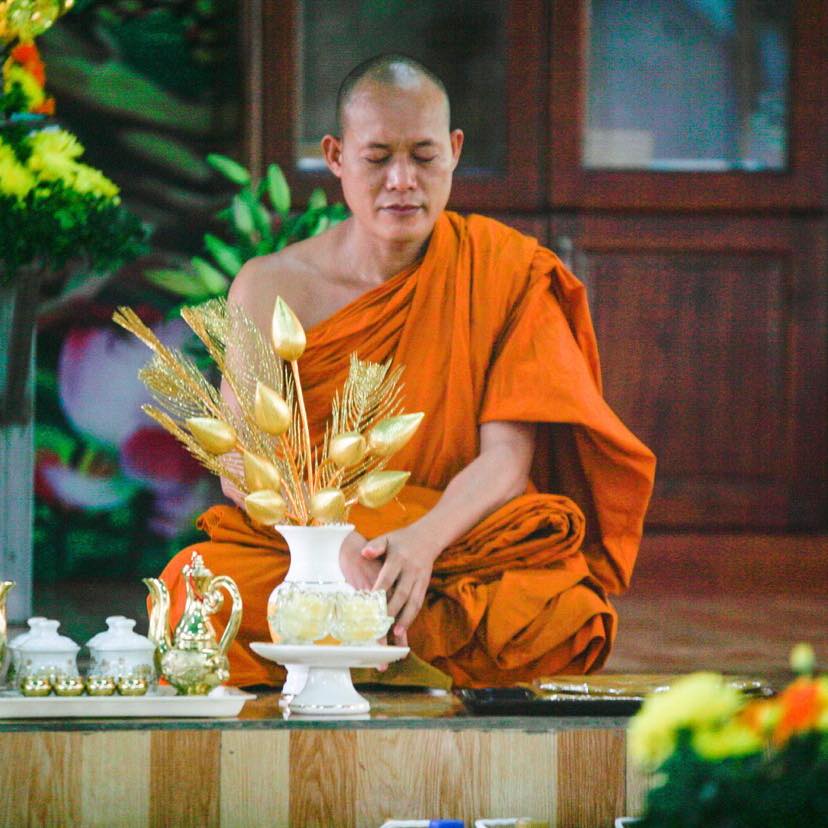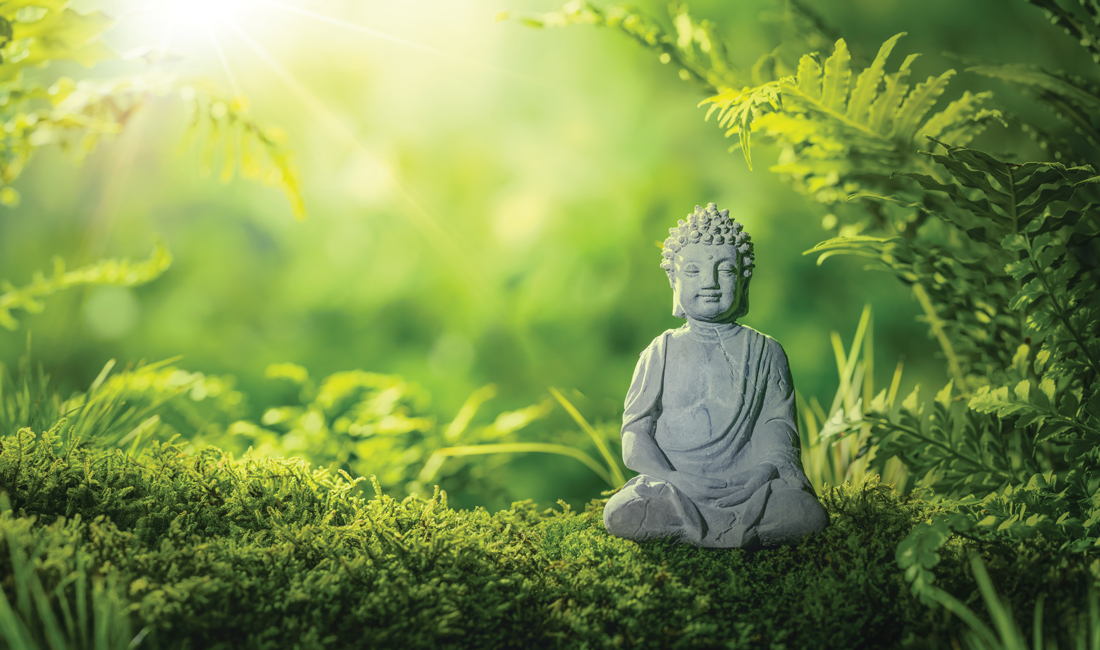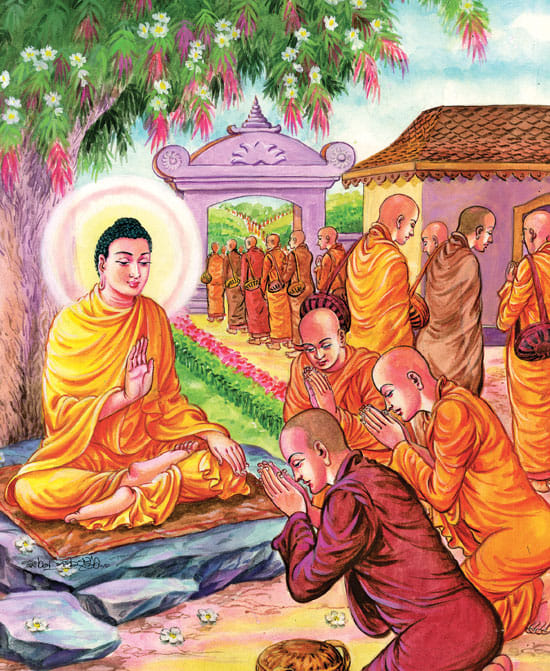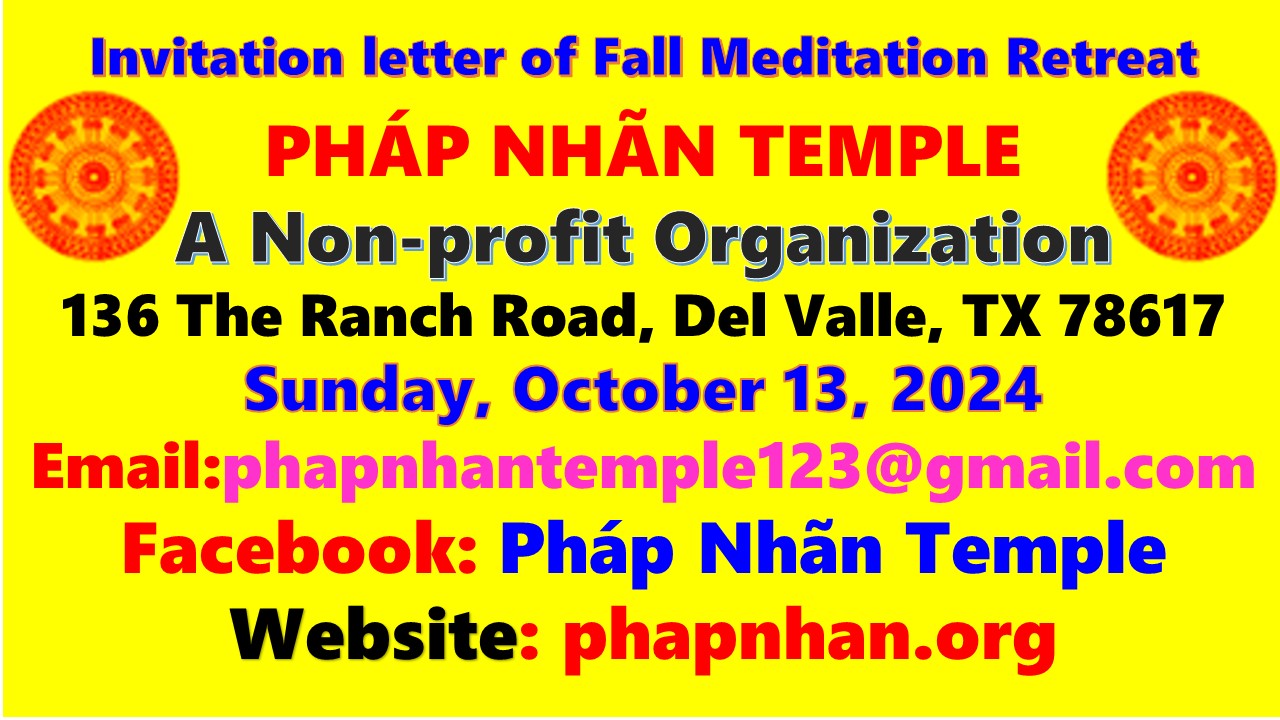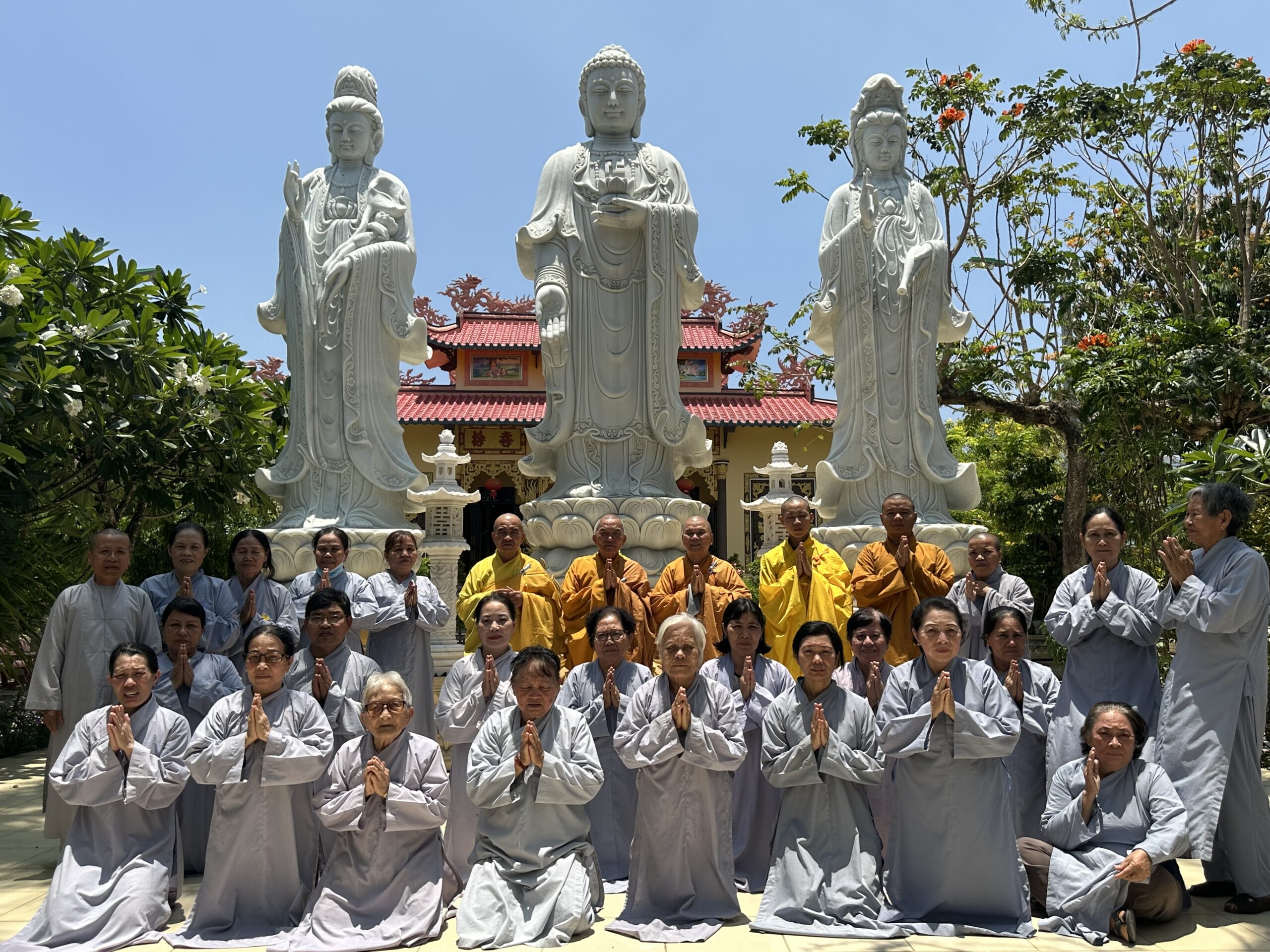Ven. Thích Trừng Sỹ

DISCOURSE ON TEACHING THE HISTORICAL BUDDHA
Thus have I heard. Once the Sakyamuni Buddha, the historical person in the flesh and bone, ever lived on this earth for over twenty-six centuries ago, was born under an Ashoka tree in Lumbini garden, a part of Nepal today, on the Full Moon Day of Vesak month, equivalently to May in 624 B.C.E. The Agama Sutra stated:
“A Unique being, an extraordinary human, appears in this world, out of peacefulness for the many, out of happiness for the many, out of compassion and benefits for gods and human beings. It is mainly the Sakyamuni Buddha, who founded Buddhism, the path of awareness, loving-kindness, compassion, wisdom, equality, and peace for all living things and living beings all over the planet.”
With the powerful vows to save living beings, the Buddha was born in the world very rarely. According to the honored Monk Ananda’s telling words, first, the Buddha lived in Tusita heaven until his longevity ended, and then, from the Tusia heaven to this world, he entered into the fetus of his holy mother Maya’s right hip. At that time, the halos illuminated brilliantly strangely, shone more than the Sunlight and the Moonlight, the world got in motion to welcome the Tathagata. When he entered into his mother’s fetus, there were the four gods guarding four directions without anyone causing a bother. His mother was ten full months pregnant. From when pregnant, she had the exalted virtue and conduct, generous loving-kindness, and compassion without the greedy mind with anyone.
While pregnant, she was delighted at ease, joy, with more health, without a little bit of sickness. She felt that she was carrying her holy fetus, as a precious pearl had no a bit of defect, perfect in the world. When he was born, his mother stood to give birth. His birth did not touch the ground yet, gods went to welcome and receive him, and then lifted him to his mother with their praiseful words: “She gave the world a perfectly and peacefully newborn Buddha. When he was just born, his body, not polluted by amniotic fluid and blood was fully pure and clean, like a bright and beautiful Mani gem. From space, there were two cool and warm water streams spraying and bathing him and his mother. Upon just being born, he himself stood stably on his feet. Directing his face to the North, walking seven steps with a white parasol covering, he strongly proclaimed, “I am the topmost in the world. This is my last life. I am not reborn in the world any longer. Within seven full days later, my mother passes away and was immediately reborn up to a Tusita heaven.”[1] (Bell)
Prophet guessing Physiognomy and astrology
Gods in the realm of joyful thirty-third heaven, praising, starting to play celestial music, singing with melodious dances right in mid-daytime. At that time, Asita and Añña Koṇḍañña were the two most eminent sages. Sage Asita claimed that the prince had two main options, when the prince grew up, whether the prince who became the monarch unified the whole of India, brought back India into unity, or became a fully enlightened Master. However, Sage Añña Koṇḍañña, one of the five fellow practitioners of later prince, emphasized, only predicting a single direction for the prince, and informing happy words:
In Lumbini garden, there was a Sakyamuni Bodhisattva, no one surpassed him, just descended on earth to bring peacefulness and happiness to the world. He is the uppermost and topmost, stands foremost in human beings. Later on, leaving the royal family for monastic life, becoming the Buddha, who set the Wheel of the Dharma in motion, roared the voice of the Dharma sound, and taught human life. Hearing the event, sage Asita immediately went to the royal family of Kapilavastu, expected to visit a newborn prince. Just seeing the respectful countenance of the newborn prince’s thirty-two good signs, the sage uttered out: “Prince Siddhartha is the topmost person of double-legged living beings.” After finishing saying, he cried, felt sad about his longevity, now grew old, did not remain a chance to meet and witness the prince’s full enlightenment. The sage affirmed that reaching the age of growing up, the prince left his secular life for monastic life, got perfect enlightenment in the world, set the Dharma wheel in motion, and the topmost purification, out of loving-kindness and compassion, loving living beings, and helping life have more benefits.[2]
No being interested in Enjoyment
When living in his royal palace, the prince was nurtured extremely especially. King Suddhodana, the prince’s father, built the prince three ponds of green, pink, and white lotuses. What the prince needed was served wholeheartedly and thoroughly. Kinds of sandalwoods, high-grade aromas, and previous Kasi silk the prince used. Both whole day and night always had a parasol shielding him from heat, cold, dust, and fog. To material conveniences, his father king built the prince three beautiful, luxurious, and noble palaces; one for winter, one for summer, and one for the rainy season. During four months in summer, whenever there were also female musicians turning around the prince served to sing, dance, and intone. Despite living in the wealthiest and happiest scenes in the world, finally, everyone had to get old, sick, and dead. When aware of this, the prince thought that he also grew old, sick, and dead, could not escape aging, sickness, and death. At that time, arrogance in him was immediately ended. He did not remain to cling to his temporarily physical body, gave up worldly material things, was determined to leave secular life for monastic life, find out enlightenment, bring peace, joy, and happiness to the many right in the present life.[3]
Renunciation of his Royal Palace
The prince was clearly aware that family life always got tied, while monastic life was spacious like an immense sky. Therefore, he let go of his throne, beautiful wife, young child, abandoned secular karma with many entanglements. He went to Rājagaha City of Magadha for living a monastic life. Bimbisara king, seeing the prince’s tall, nice, brilliant, leisurely, relaxed, mindful body, immediately gave a messenger to observe and follow the prince, and then came back to the royal palace for the report. When hearing this event, the king hurried to board a carriage and paid a visit to him. He told the king that the cause of his royal family renunciation was because he did not desire to enjoy sexual pleasure. He saw very clearly craving to enjoy sexual pleasure is a big obstacle for his cultivation, so he made an effort to renounce it, was determined to leave his secular life for monastic life to find out the Dharma, live out of peaceful joy and happiness for living beings.[4]
Searching Masters for Dharma Learning
At the age of youth, abundant health, vigorous body, although prince Siddhartha’s father king did not agree with the prince leaving his secular life for monastic life, the prince who was determined to renounce royal family, shaved and gave up beard and hair, put a robe on his shoulder, renounced his secular life to search masters for Dharma learning, sought the truth, led to enlightenment, and transformed suffering. First, Siddhartha sought to see Master Alara Kalama and requested that: “Dear teacher, What the Dharma do you cultivate, obtain, and teach?” Alara Kalama replied he attained The Third meditation – the Abode in which nothing exists at all. With determination to cultivate effort, mindfulness, awareness, meditation, wisdom, shortly afterward, Siddhartha reached enlightenment like Master Alara and affirmed that: “Meditation of the abode in which nothing exists at all MasterAlara obtained has no the ability to lead to quietness, topmost wisdom, enlightenment, deliverance, and Nirvana. Confirmed like that, Siddhartha bravely left his master and kept going on the way to seek spirituality.”
The second Master Siddharta met was Uddaka Ramaputta obtained the fourth meditation – the Abode of Neither Thought Nor Non-Thought.” With determination to cultivate effort, mindfulness, awareness, meditation, concentration, wisdom, shortly afterward, Siddhartha reached enlightenment like Master Uddaka. Recognizing Bodhisattva Siddharta’s outstanding talent, Master Uddaka was happy to invite Bodhisattva to keep living there for looking after students together.” At that time, Bodhisattva perceived clearly that: “Meditation of the Abode of Neither Thought nor non-thought” Master Uddaka obtained has no the ability to lead to calmness, topmost wisdom, enlightenment, liberation, Nirvana. Confirmed like that, Siddhartha bravely left his second Master and kept going on the way to seek spirituality.”
Six Years of Asceticism
After saying goodbye to the two Brahmanical teachers, Boddhisattva practiced asceticism for six years, no one could compare with him. Because he ate so few, his legs and hands got as thin as blades of grass, dry and withered creeper. His feet were like the toenails of a camel. His spine exposed as a string of a ball. His skinny ribs were like rafters of a decayed house. His eyes did not remain glistening and lay very deeply. His head skin got wrinkled as bitter melons changed white gray. Gusts of hot wind made it dry. His belly skin clinging closely to the spine was black and ugly. When going to the restroom, he fell down and faced down to the ground. His hairs decayed and left out of his body. He himself massaged his body, whole legs and hands ached and pained a lot. Recognizing this, He was determined to give up the cultivation way of Brahmanical asceticism. He left out of Uruvela forest for going straight to Bodhgaya to focus his mind on meditation throughout forty-nine days and nights.”
“With his mind of concentration, he entered meditation in the shade of Bodhi tree, transformed sexual desire, left the unwholesome things, purified my mind, attained the first meditation; a state of the delight and joy, born by the detachment of desire, with applied thought, with sustained thought. He attained the second meditation; a state of joy and pleasure born by concentration without applied thought, without sustained thought, inner tranquillization, and single-pointed mind. He attained the third meditation; a state of joyfully abided equanimity, mindfulness, awareness, feeling of happiness he did not cling to. He attained the fourth meditation; a state of letting go of all concepts, neither suffering nor pleasure, absolute entirely purification in him grew. He realized that it was the way leading to enlightenment, peacefulness, and Nirvana. (Bell)
Enlightenment beneath the Bodhi Tree
With his mind of concentration, clearly purified tranquility, there was no longer pollution. The Buddha forwarded his mind to perfect wisdom and knew as it was true: “This is suffering belonging to body and mind; the body consists of four kinds: Birth, aging, sickness, and death; the mind consists of four kinds: Loving together has to be separated, angering together has to meet, desiring something but cannot achieve, mind gets disappointed.” He knew as it was true: “This is the cause of suffering consisting of cravings, anger, delusion, wrong view, wrong thought, wrong speech, wrong action, wrong livelihood, wrong effort, wrong mindfulness, wrong concentration, and kinds of clinging.” He knew as it was true: “This is Nirvana–absolute peacefulness, topmost happiness–suffering and defilements are fully transformed.” He knew as it was true: “This is the right path consisting of morality, meditation, and wisdom interconnected very closely with Right view, right thought, right speech, right action, right livelihood, right effort, right mindfulness, and right concentration.” He knew as it was true: “This is suffering, this is the cause of suffering, this is true happiness, this is the way of cultivation leading to the end of suffering.” By recognizing this, his mind was freed from leakage, cravings, leaky ignorance. He knew very clearly: “Rebirth is ended, holy conduct gets achieved, what should be done has been done, there is no remaining to turn back the states of this birth and death any longer.
Proclaiming the Truth
At that time, Brahma Sahampati said respectfully to the Buddha: “Dear sir, would you please be happy to stay in this world in order to preach the Dharma to living beings, who are very lucky to hear your wonderful Dharma? Accepting the request of the Brahma, the Buddha contemplated and brought out vivid and specific examples as follows: “There are living beings with much defilement dust in mind, with less defilement dust in mind, and without defilement dust in mind. Thanks to hearing and practicing the wonderful Dharma, gradually they cultivate, transform bad karmas, lead minds to peacefulness and happiness right in the present life. Then, the Buddha thought that: “I will preach the Dharma to who is the first person?” I immediately think about Master Alara, but he died seven days before. I keep thinking about the Master Uddaka, but he just departed yesterday.”
The Buddha immediately thought about a group of five monks, who had ever been fellow friends with him, cultivated asceticism in the Deer Park of Banaras. He set out to meet them there. In the First Sutta of Setting the Dharma Wheel in motion, he affirmed: “Dear disciples, those who do not obtain enlightenment, do not master the four Noble Truths, so they drift in the cycle of birth and death. When cultivating maturely, obtaining enlightenment, they will master the essence of suffering, the cause of suffering, true happiness, the path leading to the transformation of suffering.”
The Buddha’s Enlightenment Fruition
The Buddha attained perfect enlightenment in the world. This was his last life. From this time onward, he was not pushed by karma. Dear disciples, there is only the fully enlightened person appearing in the world, there is no peer and similar. I am the Tathagata, fully Enlightened One, and the perfect awakened One among two-leg species.” The following event cannot happen: In a world, there are not two Buddhas appearing at the same time. In a world, there is only the Buddha attaining the fully perfect enlightenment.”
“Dear disciples, for example, in a lotus pond, there are kinds of green, pink, and white lotuses being born in water, growing up in the water, reaching across the surface of the water, and reaching beyond the surface of the water, but through the process of growing and living in a water pond, all kinds of lotuses gradually bloom freshly. Likewise, born in the world, growing up in the world, I conquer the world, I am not dominated by lifestream. I am the Buddha, the perfect enlightened or awakened One. I become a person not controlled by greed, anger, delusion, and ignorance. I was born in the world, out of loving-kindness, compassion, peace, joy, and happiness for the many all over the planet.” (Bell)
Transmitting the Dharma and Following the Truth Lamp
After accepting the request of Brahma Sahampati, the Buddha set out to instruct Anna Kondanna, Vappa, Bhaddiya, Mahanama, Assaji, Dasa, Dasa’s family, and friends, A total of 60 Arhats are first present in this world. He kept instructing three Vedic hermit heads of fire worship religion: Urivilia Kashyapa, Nada kashyapa, Gaya Kashyapa, along with a thousand of their disciples. Most of the kings, religious and secular leaders at that time were instructed by the Buddha. They had right and bright direction and took refuge firmly in the light of the Buddha’s enlightenment and awakening.
The Buddha and his disciples, who mainly depend on meditation and donors’ almsgiving and donation to nurture their minds and bodies, rely on the natural environment, their own enlightenment, joy, and happiness to instruct other people. Living their familyless lives, they who spend much time cultivating and serving living beings depend on sentiments of Master and students, Dharma friends and fellow monastics, sentiments of protecting and spreading the Dharma to build the sisterhood and brotherhood and benefit living things and living beings. (Bell)
Among them, the most virtuous, talented, and famous disciples of the Buddha are listed below:
The Ten Most Virtuous and Renowned MONKS include:
1. The honored Venerable Sāriputta – an outstanding wise Teacher with the spirit of building Brotherhood and Sisterhood and bringing the best harmony to the Sangha. He has great wisdom debating without any hindrance, responding, and solving all problems supremely intelligently, skillfully, flexibly, and quickly.
As the closest friend of the honored Venerable Moggallāna, when listening to and clearly understanding Venerable Assaji, one of the first five disciples of the Buddha, preached the dharmas of dependent origination, dependent arising, and impermanence, which the honored Venerable Sariputra fully understood. When entrusted by the Buddha to the construction of Jetavana Monastery, together with male lay devotee Sudatta Anathapindika, he was the one who directly managed the complete construction work.
As the Dharma Teacher who transmitted the novice monk’s ten mindfulness trainings and directly taught the Buddha Dharma to Rahula, Teacher Sāriputta has the virtues of humility, modesty, forgiveness, and joy in sharing what he has understood for other people to understand together happily.
2. The honored Venerable Moggallana – the closest friend of Venerable Sāriputta, has the supremely psychic power, using the psychic power to subdue many people. Venerable Moggallana, who was filial to his mother supremely and skillfully invited and made offerings to the largest Sangha.
3. The honored Venerable Mahākassapa – The supremely exemplary, virtuous, and austere Patriarch, capable of collecting, persuading, and leading the Sangha, and presided over the period of reciting the first Buddhist Council in the Suttas and the Vinaya – virtuous trainings after three months the Buddha entered Nirvana.
4. The honored Venerable Subhuti – the younger full brother of Sudata Anathapindika, had the virtues of loving-kindness, compassion, purity, and no argument, penetrated the nature of full emptiness, and applied contemplative meditation in daily life to benefit oneself and other people right in the present life.
5. The honored Venerable Puṇṇa Mantānīputta – A talented Preacher, who considered the Dharma as the foremost, preached the Dharma supremely persuasively and eloquently, diligently propagated the Dharma in all towns and villages, regardless of rich or poor families, considering everyone as his Bodhi relatives.
When going to a new region, he played the role in visiting the sick and taking care of the sick, learning the local language to teach the Buddha Dharma and benefit many people. The Dharma talks that he skillfully shared were always suitable for everyone’s abilities, levels, and knowledge.
He lived humbly, modestly, and rejoiced in the success of other people, lived with brotherhood of Dharma fellow friends, had the deep, right, and strong confidence in the Three Jewels without shaking and wavering.
6. The honored Venerable Mahākaccāyana – the talented, intelligent, and outstanding commenter, explained, annotated, and interpreted the Buddha Dharma eminently.
The Venerable Mahākaccāyana, having an uncle named Asita, the famous hermit in the region was invited by King Suddhodana to go to the royal family of Kapilavastu to see signs for newborn prince Siddhartha, a future Buddha.
Under the attentive, enthusiastic, and skillful guidance of his uncle Asita, the Venerable Mahākaccāyana learned and absorbed very quickly all that his uncle taught. After his uncle Asita passed away, remembering his uncle’s right encouragement, the Venerable had enough wholesome conditions to leave home for monastic life and become one of the ten chief disciples of the Buddha.
7. The honored Venerable Anuruddha – A cousin younger brother of the Buddha, one of his chief disciples, dedicated himself to meditation practice, and eventually attained divine eye power (dibba-cakkhu).
8. The honored Venerable Upali – The talented and virtuous attorney who practiced the most exemplary Vinaya precepts had the ability to bring harmony and reconciliation to the Sangha, and recited the Vinaya – virtuous disciplines during the first Buddhist Council under the presiding of the honored Venerable Maha Kassapa.
9. The honored Venerable Ananda – the Dharma teacher had the ability to listen deeply, absorb, thoroughly remember the Buddha Dharma in detail, had the merit to recite the Buddha’s teachings in the period of reciting the Sutta Pitaka in the first Council.
When the Buddha was 55 years old, Venerable Ananda was officially elected by the Sangha to be a 25 -year attendant regularly beside the Buddha. The Venerable was very good, loyal, dedicated, thoughtful, skillful, and successful in the three times of inviting the Buddha to allow women to leave their secular lives for monastic lives.
The Buddha happily agreed, accepted, and established an order of the first Buddhist nuns in the city of Vaishali in the world’s first Buddhist nun in human history.
10. The honored Venerable Rahula – The person who was the youngest one to renounce his secular for monastic life at the age of six in the Buddha’s time, had the ability to listen to and absorb the Buddha Dharma directly under the guidance of enthusiasm, dedication, and thoughtfulness from the two honored Venerable Sariputra and Venerable Moggallāna.
After learning and practicing the Buddha Dharma diligently, the Venerable Rahula transformed the body and mind very effectively and made the vow to practice the virtues of right, fine, and mindful patience and manners.
The Ten Most Virtuous and Renowned NUNS include:
1. The honored elder Nun Pa-jā-pa-ti Gotami – The One who had the highest Dharma age guided, established, led the Bhikkhuni Sangha, practiced ascetic cultivation supremely.
2. The honored elder Nun Khemā – The One who had perfect wisdom.
3. The honored elder Nun Uppalavanna – The One who attained supreme psychic power.
4. The honored elder Nun Nandā – The One who practiced meditation supremely.
5. The honored elder Nun Sakulā – The One who had a supremely clairvoyant vision.
6. The honored elder Nun Dhammadinnā – The One who preached the Dharma supremely.
7. The honored elder Nun Bhaddā Kaccānā or Bimbadevi known as Yasodharā – The One who attained supreme mind stillness.
8. The honored elder Nun Patacā – The One who was good at Vinaya Pitaka – the Basket of virtuous principles supremely.
9. The honored elder Nun Kisa Gotami – The One who practiced ascetic cultivation supremely, understood impermanence clearly.
10. The honored elder Nun Sigālakamātā – the One who had the stable and right confidence supremely (Bell).
The Ten Most Virtuous and Renowned Male Lay Disciples include:
1. Sudatta Anāthapiṇḍika – The male lay businessman who was rich in almsgiving made offerings of Jetavana Monastery to the Buddha and the Sangha, and protected the Triple Gem supremely.
2. His holiness, King Bimbisāra– The devout donor who expressed his heart to make offerings of the first Venuvana Bamboo Grove monastery to the Buddha and the Sangha.
3. His holiness, King Pasenadi – The devout donor who had the courage to prevent, abolish the custom of killing creatures to sacrifice to Brahminical idols solved and clarified the case of Ms. Sundarì who was killed by jealous religious leaders to slander the Buddha and the Sangha.
4. Herbalist Jīvaka – The good physician who was rich in compassion devoted to caring for the health of the Buddha, the Sangha, and everyone, including King Bimbisāra, King Ajātasattu, etc.
5. Citta – Male lay preacher who preached the Dharma fluently.
6. Hatthaka – The male lay practitioner who was good at mastering the Assembly diligently practiced the Four Most Effective Methods including almsgivings, loving speech, beneficial action, and cooperation.
7. Uggata – The male lay devotee who had the sincere heart to protect and uphold the Sangha.
8. Sūra-Ambaṭṭha – The male lay devotee who had strong confidence in the true Dharma with his immovable mind.
9 & 10. Tapusa and Balika – The two male lay devotees who made offerings of the first meal to the Buddha after he attained enlightenment in the seventh week. They were the first two people to take refuge in the Buddha and take refuge in the Dharma. At that time, the Sangha was not established in Bodhgaya yet.
The Ten Most Virtuous and Renowned Female Lay Disciples include:
1. Sujāta – The female lay devotee who made offerings of a bowl of milk porridge to the Buddha before he got enlightenment was the first woman to take refuge in the Buddha.
2. Visākha – The female lay devotee who wholeheartedly made offerings of Migāramātupāsāda hall to the Buddha and the Sangha protected, and upheld the Triple Gem supremely.
3. Khujjuttarā – The female lay devotee who had the ability to accurately hear and remember the Buddha Dharma clearly.
4. Uttarā – The female lay devotee who was good at meditation practice.
5. Sāmāvatī – The female lay devotee who had immense loving-kindness and compassion.
6. Kātiyānī – The female lay devotee who had strong confidence in the Dharma deeply.
7. Suppiyā. – The female lay devotee who was the first nurse was devoted to caring for sick people considerately and thoughtfully.
8. Nakulamātā – The female lay devotee who wholeheartedly practiced saying loving speech supremely.
9. Suppavāsā – The female lay devotee who made offerings of high-grade dishes to the Buddha and the Sangha.
10. Kāli Kulagharikā – The female lay devotee who had a wise and true heart heard and clearly understood what other people reported. (Bell)
As his disciples became more and more crowded, the Buddha encouraged and advised them as follows:
“Listen, disciples. Be diligent in your journeys. Out of peacefulness for the many, out of happiness for the many, out of compassion and benefits for life, you all do not go on the same way. Go forth to many different directions to propagate the Dharma and save living beings. Bring your own cultivation, peacefulness, and happiness to teach other people. The Tathāgata’s teachings are perfect in the beginning, perfect in the middle, perfect in the end, both in the meanings and in the letter. Proclaim your holy and peaceful lives to the many all over the planet. The Tathāgata will go to the direction of Uruvela to spread the truth.”[5]
“Listen, disciples, anciently as well as today, the Tathāgata only speaks of two main goals, that is, to identify suffering and transform suffering by applying and practicing the Noble Eightfold Path right here and right now in the present life. Listen, disciples, the Tathāgata does not dispute anything with life, only life disputes with the Tathāgata. To practice this well, wherever you preach the Dharma, you should nurture loving-kindness and compassion, and should not dispute anyone in life.”
The Buddha as the Master showing the Right Way
“Listen, disciples, as the Teacher, what I do is out of compassion, brings peace and happiness to living things and living beings all over the planet. This is a tree stump, this is a quiet place, be diligent in your meditation practice, do not be distracted, do not regret it later. These are my teachings. Try to practice them well. Listen, disciples, the spiritual tradition established by The Tathāgata is extremely beautiful, has great values, please keep maintaining.”
“The World-Honored One is the fully enlightened One, preaching the way to be enlightened. He mastered and preached the method to be mastered. He who obtains noble silence preaches the method to obtain noble silence. He who overcomes preaches the method to be overcome. He who attains Nirvana preaches the method to attain Nirvana.”
“Listen, disciples, there is the Noble Eightfold Path leading to Nirvana; The Tathāgata is present as the Master of directions. What is taught, he has taught. What needs to be done, he has done. In this congregation, there are people who have attained holy fruition, some who are and will try to practice the Buddhadharma. The Tathāgata is the Master who points at the right way to them.
Afterward, the Buddha taught very many different kinds of people, in all walks of society, such as kings, mandarins, merchants, servants, even cow feces pickers, murderers, and courtesans. His Dharma and Sangha have the capability to accept people coming from different castes, religions, skin colors, races, etc. Those who have enough wholesome conditions to cultivate, learn, understand, practice, and apply the Buddhadharma in their daily lives mindfully and awakeningly can bring peaceful joy and authentic happiness to themselves and to others right here and now in the present life.
The Buddha’s disciples mainly include two big assemblies: Monastics and lay people. Both of these assemblies that support one another as an image and its shadow make the key factors bring Buddhism into life, and help life add joy and lessen suffering.
Propagating the Dharma for 45 years, all that the Buddha has taught is like a handful of tree leaves in the palm of his hand, is to help people recognize suffering and transform it, and to help them live lives of peace and happiness right in the present world. (Bell)
Testaments
“Listen, disciples, for forty-five years, here and there, I have spread this Dharma, with thousands of nobly valuable sermons, for many different classes of people, from kings to the people, from high class to low class, from Buddhists to non-Buddhists. Those who have a good opportunity to learn, understand, apply, and practice the Buddhadharma into their daily lives, have the ability to give up bad karmas, to develop good minds, to purify minds, to lead them to peacefulness, happiness, deliverance, and Nirvana right in the present life.”
Now was the time for his body to be sick. On the last day, the Buddha was in the Sala forest and taught the following: “My body gets old and sick, my back is bent forward, my limbs are exhausted, my senses get gradually weakened, my skins are wrinkled, and my eyes are no longer clear as before. Listen, disciples, the truth is like that. The nature of old age lies in young age. The nature of death lies in life.”
“Listen, disciples, The Tathāgata who preaches the Dharma without distinction, never hiding anything in his hands at all. He thinks that: “Morality, meditation, and wisdom will be the perfect teachers and also the key teachings for the Sangha.” He does not think that he is the leader of the whole Sangha. The Sangha is subject to his guidance. He has announced the path of enlightenment. Now he is old and eighty years old, about to come to the time to abandon his life. His body is like an old carriage, within a short time being decayed. Then his mind will no longer cling to the aging sign, the feelings of anxiety and fear in him will not arise. He attains and dwells in the signless concentration. His body and mind are extremely comfortable and free.”
“Listen, disciples,
Be yourself lighting the torch to go,
Be yourself taking refuge in yourself
Be yourself taking refuge in your own island
Be yourself making the island for your own refuge
Be yourself taking refuge in your own stable cultivation.
Do not take refuge in anyone or anything else.
Use the Dharma as the lamp to illuminate yourself
Use the Dharma as the island for yourself
Use the Dharma as the best refuge for yourself
Use the Dharma to practice and benefit yourself and other people right in the present life.
Therefore, you are determined to take refuge in the right Dharma, not to take refuge in the wrong dharma, or anything else.”[6]
To take refuge in the Dharma means to take refuge in the cultivation of your own ethics, meditation, wisdom, deliverance, and deliverance with the right understanding.
Not to take refuge in the wrong dharma means not to take refuge in Brahma, gods, devils, monsters, heresies, wrong dharma, wrong teachings, wrong teachers, bad friends, and bad environment.”
In Maha Parinibbana Sutta, Digha Nikāya, before entering Nirvana, the Buddha advised his disciples: “O disciples, everything is impermanent and changing. Make efforts to cultivate and practice the Buddhadharma more and more, to bring joy and happiness for yourself and for other people right here and right now in the present life. These are my ultimate teachings for you all.”[7]
The Abandonment of Life
“When hearing the Buddha has entered Nirvana, the Malla people in Kusinagar, monastics, and lay people were heartbroken, in agony and sadness, some cried with messy hair, others lamented themselves, and fell down to the ground. Standing in front of the scene of bidding farewell to the Buddha, monastics did not attain holy fruition yet, they could not stop the tears of mercies. Why the Buddha passed away so soon. He has gone, the Dharma eyes disappeared from this life. What a pity it was. Those who attained holy fruition dwelled in mindfulness and inner thoughts. “Everything in the world is impermanent. No one can avoid this separation moment.”
“No one told anyone, many people that gathered incense, flowers, musical instruments, precious silk, etc., brought them to the Sala forest, revered, commemorated, made cremation ceremony of the Buddha’s physical body for seven continuous days. Before sending off his body to the pyre, everyone made offerings to his relics with dances, lyrics of meditative flavors, garlands, and aromas. His body wrapped in precious silk consisted of five hundred layers, placed in a golden coffin. The burning pyre impregnated with precious aromas lifted his golden body. Hundreds of garlands of flowers were well decorated. The elder Monk Maha Kassapa and five hundred Bhikkhu disciples immediately coming back home from Pava place for exactly one week just arrived there.”
When the Honored elder Monk Maha Kassapa and all people paid homage to the World-Honored One, the fire started to burn. Fragrance radiates, the sky is upset, human minds got very sad. After the cremation ceremony, the Buddha’s golden body left many extremely precious relics. His relics divided into eight parts, contained in caskets of stone, dedicated to eight devout Buddhist kings, built worship stupas in their countries, helped people have the opportunity to pay homage to his relics.
Existing on this earth for eighty years, about 544 BCE., at the age of 80, the Buddha who passed away peacefully lay on his right hip, left leg stretched out on right leg, his head turned to the Northern direction beneath two longevity trees in the Sala forest in Kushinagar District, India today.
To pay homage and profound gratitude to the World-Honored One, whose disciples themselves must live correctly with the Dharma by vowing not to do evil, to do good, to keep bodies and minds purified. All of us have to be gifts of cultivation, peace, joy, and true happiness to be dedicated to ourselves and other people right here and right now in the present life.
When chanting here, we disciples wholeheartedly pay homage to the Buddha, the wonderful Dharma, and the harmonious Sangha.
Namo the Original Master Sakyamuni Buddhaya
(3 times, Bell)
References
[1] Kinh Hy Hữu, Vị Tằng Hữu Pháp, thuộc Kinh Trung Bộ 123.
[2] Sutta Nipata, verse 679 – 694.
[3] Anguttara Nikàya I, 162-163.
[4] Sutta Nipata, Verse 405 –424.
[5] Mahāvagga 19 – 20
[6] Samyutta Nikaya V. With Yourselves as an island.
[7] See Dìgha Nikāya – Mahāparinibbāna sutta Part II, 16.


